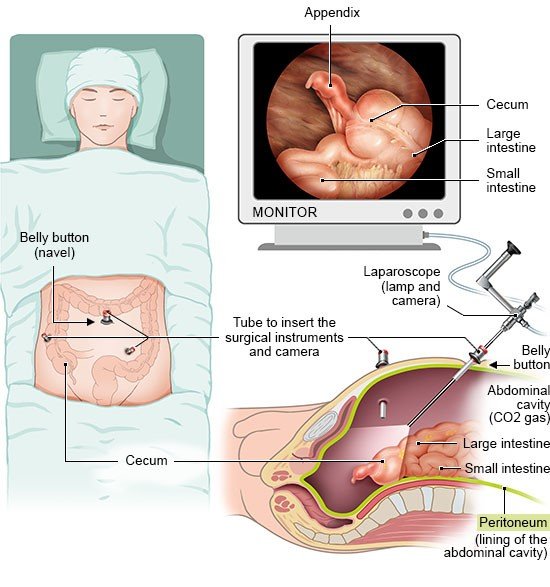When is laparoscopy used?
Laparoscopy can be used for diagnosis and treatment. That is why experts make a distinction between diagnostic and therapeutic laparoscopy. The two types can also be combined: If the doctor discovers growths in the abdomen, they can be removed right away. The advantage of that is that a second procedure isn't needed.
Diagnostic laparoscopy
Laparoscopy can provide more information if other examinations have not found a cause of ongoing symptoms.
It can be used to
- take a closer look at organs in the abdomen and pelvis, and check them for pathological changes,
- take tissue samples to be examined in a laboratory,
- see how advanced a disease is, such as whether a tumor has already spread, or
- decide whether open surgery is needed.
Therapeutic laparoscopy
If a diagnosis has already been made, surgery can often be performed right away. Laparoscopic surgery can be used to remove
- the gallbladder
- the appendix to treat appendicitis
- growths in the abdomen
- diseased or injured sections of the bowel
Therapeutic laparoscopy is also key in treating gynecological diseases such as endometriosis or fibroids.

